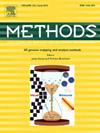MLFA-UNet: A multi-level feature assembly UNet for medical image segmentation
IF 4.2
3区 生物学
Q1 BIOCHEMICAL RESEARCH METHODS
引用次数: 0
Abstract
Medical image segmentation is crucial for accurate diagnosis and treatment in medical image analysis. Among the various methods employed, fully convolutional networks (FCNs) have emerged as a prominent approach for segmenting medical images. Notably, the U-Net architecture and its variants have gained widespread adoption in this domain. This paper introduces MLFA-UNet, an innovative architectural framework aimed at advancing medical image segmentation. MLFA-UNet adopts a U-shaped architecture and integrates two pivotal modules: multi-level feature assembly (MLFA) and multi-scale information attention (MSIA), complemented by a pixel-vanishing (PV) attention mechanism. These modules synergistically contribute to the segmentation process enhancement, fostering both robustness and segmentation precision. MLFA operates within both the network encoder and decoder, facilitating the extraction of local information crucial for accurately segmenting lesions. Furthermore, the bottleneck MSIA module serves to replace stacking modules, thereby expanding the receptive field and augmenting feature diversity, fortified by the PV attention mechanism. These integrated mechanisms work together to boost segmentation performance by effectively capturing both detailed local features and a broader range of contextual information, enhancing both accuracy and resilience in identifying lesions. To assess the versatility of the network, we conducted evaluations of MFLA-UNet across a range of medical image segmentation datasets, encompassing diverse imaging modalities such as wireless capsule endoscopy (WCE), colonoscopy, and dermoscopic images. Our results consistently demonstrate that MFLA-UNet outperforms state-of-the-art algorithms, achieving dice coefficients of 91.42%, 82.43%, 90.8%, and 88.68% for the MICCAI 2017 (Red Lesion), ISIC 2017, PH2, and CVC-ClinicalDB datasets, respectively.
MLFA-UNet:用于医学图像分割的多层次特征组合 UNet。
医学图像分割对于医学图像分析中的精确诊断和治疗至关重要。在采用的各种方法中,全卷积网络(FCN)已成为分割医学图像的一种重要方法。值得注意的是,U-Net 架构及其变体在这一领域得到了广泛应用。本文介绍了 MLFA-UNet,这是一种旨在推进医学图像分割的创新架构框架。MLFA-UNet 采用 U 型架构,集成了两个关键模块:多级特征集合(MLFA)和多尺度信息关注(MSIA),并辅以像素消失(PV)关注机制。这些模块协同促进了分割过程的增强,同时提高了稳健性和分割精度。MLFA 同时在网络编码器和解码器中运行,有助于提取对准确分割病变至关重要的局部信息。此外,瓶颈 MSIA 模块可取代堆叠模块,从而扩大感受野,并在 PV 注意机制的强化下增强特征多样性。这些综合机制通过有效捕捉详细的局部特征和更广泛的上下文信息,共同提高了分割性能,从而增强了识别病变的准确性和弹性。为了评估该网络的多功能性,我们在一系列医学图像分割数据集上对 MFLA-UNet 进行了评估,这些数据集包括无线胶囊内窥镜(WCE)、结肠镜检查和皮肤镜图像等多种成像模式。我们的结果一致表明,MFLA-UNet 优于最先进的算法,在 MICCAI 2017 (Red Lesion)、ISIC 2017、PH2 和 CVC-ClinicalDB 数据集上的骰子系数分别达到了 91.42%、82.43%、90.8% 和 88.68%。
本文章由计算机程序翻译,如有差异,请以英文原文为准。
求助全文
约1分钟内获得全文
求助全文
来源期刊

Methods
生物-生化研究方法
CiteScore
9.80
自引率
2.10%
发文量
222
审稿时长
11.3 weeks
期刊介绍:
Methods focuses on rapidly developing techniques in the experimental biological and medical sciences.
Each topical issue, organized by a guest editor who is an expert in the area covered, consists solely of invited quality articles by specialist authors, many of them reviews. Issues are devoted to specific technical approaches with emphasis on clear detailed descriptions of protocols that allow them to be reproduced easily. The background information provided enables researchers to understand the principles underlying the methods; other helpful sections include comparisons of alternative methods giving the advantages and disadvantages of particular methods, guidance on avoiding potential pitfalls, and suggestions for troubleshooting.
 求助内容:
求助内容: 应助结果提醒方式:
应助结果提醒方式:


